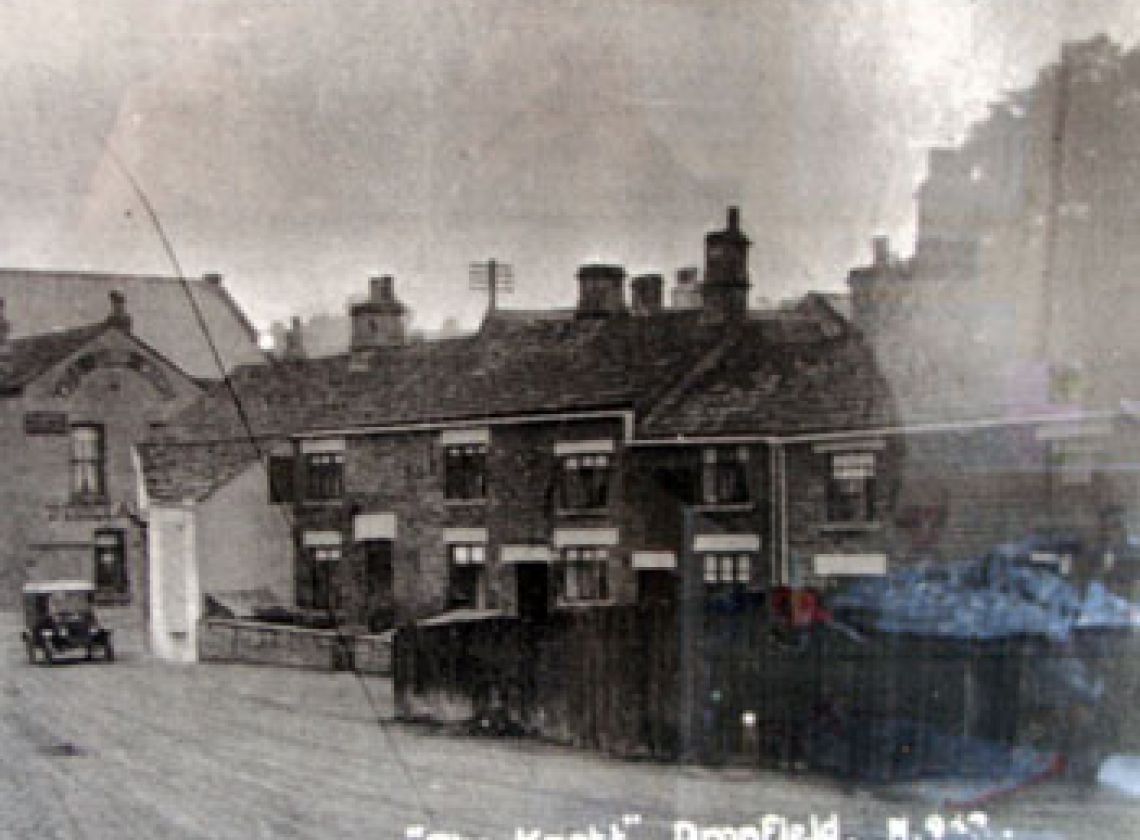History
Artisans' Dwellings
Before the Midland Railway came to Dronfield, Lea Lane ended at the bottom of Church Street.
The lane in front of the cottages, then called Shaw Lane, continued down to the River Drone, along the side of the narrow tail of the dam and met with the bottom of Soaper Lane, to cross the river by a bridge. The cottages seem to have been built in the early 1830's because Sanderson's map of 1835 shows both rows of cottages, though the tithe map of 1838-9 only shows the row of four cottages attached to the corner shop. By 1842, the second row of four dwellings is again show. Both maps have a schedule with names of owners and occupiers and subsequently we can repopulate the dwellings with the help of the census returns and electoral roll.
In 1851, Jarvis Smedley, a grocer from Eckington, with his wife Mary, one child and a servant occupy the shops and first house. Next door is John Yeakin, a coal miner with Charlotte and two children. Joseph Mather, Alice, three children and a lodger are next. Four of the men in the rest of the cottages are described as spindle or flyer makers, probably employed at the Lucas works at the end of the lane. Samuel Lucas and family reside at Vale House opposite. There is a well at the end of the row, providing their water supply and their gardens slope up towards the churchyard. By 1870 the Midland Railway Company has taken over the land formerly occupied by the dam and altered the line of the lane, which now goes over the railway.
From Inland Revenue returns of 1914 when the cottages were sold, we know the weekyl rents that were paid: 5s 6d for No. 25; 3s 9d for No. 24; 4s for Nos. 26, 27 and 28; 3s for No. 29. Rates were paid by the landlord, John Phillips.
The mid 1930s are the final years that the cottages are residences; the electoral roll of 1930 shows that the Butler Foundry has begun to occupy some of them. Among the last occupants are Dorothy Platts, William and Lois Tomlinson, Hugh Fletcher and Mary Ann, Victor Kirkland, John and Elizabeth Rotherham, Francis and Nellie Hill, Raymond, Herbert and Laura Hardwick and Elisha Dixon. The women are now on equal terms with men; since 1928 all have the vote at 21 years. Hugh Fletcher is a plumber and runs his business from No. 25 Lea Road until 1937 when his name is still in the Trade Directory. Conversations with older residents have confirmed that he was much in demand. His wide Mary is named as tenant in the final transfer of the properties from the Phillips to W.H. Butler & Sons in 1938. The properties are condemned as unfit for human habitation in 1938 and Butler's acquired the whole site from Ellen Phillips. The cottages become the core shop and storage for the Foundry and the corner shop is the office.


Plan Your Visit
The Forge Shopping Centre is open
Monday - Saturday
10am - 5pm
The Forge Shopping Centre
Church St, Dronfield, S18 1QX
Find out more